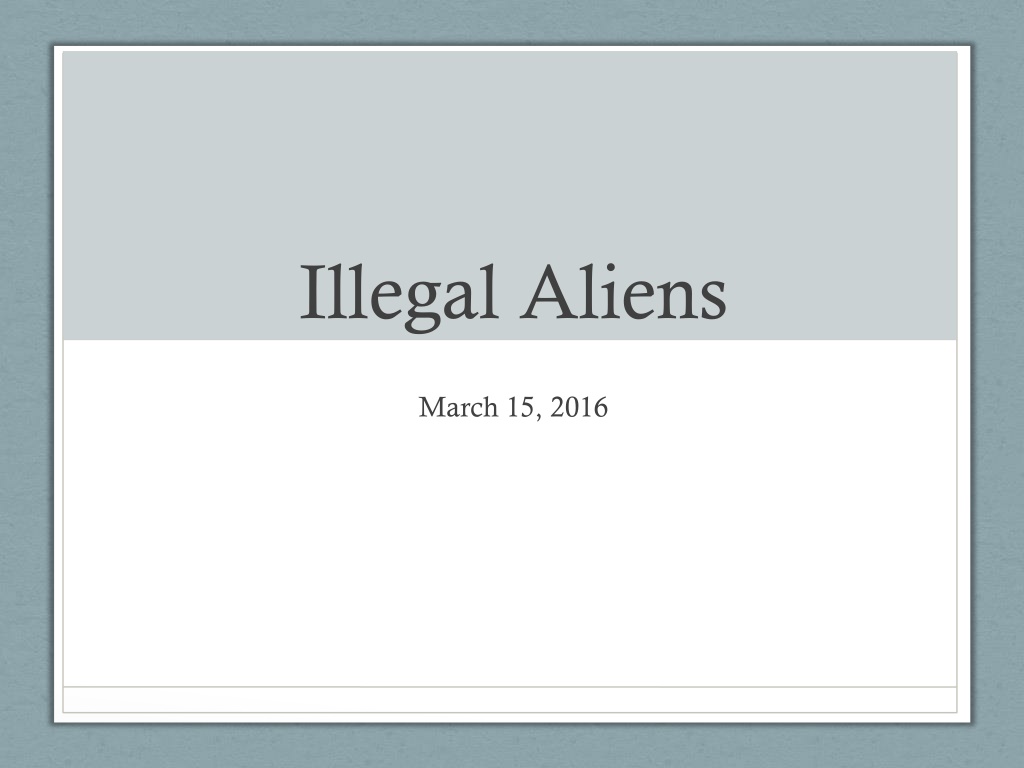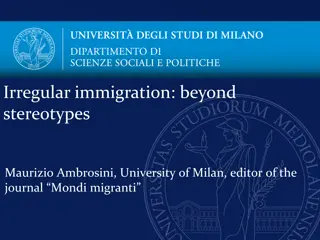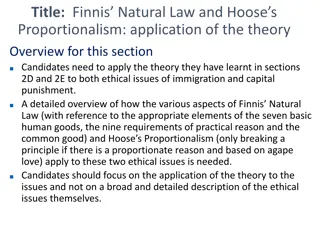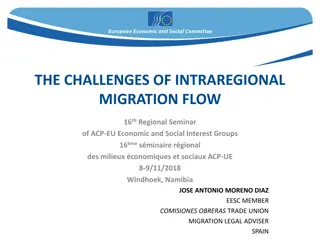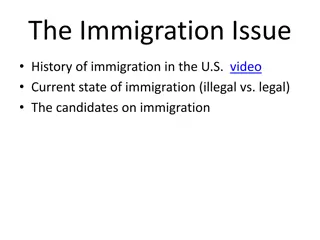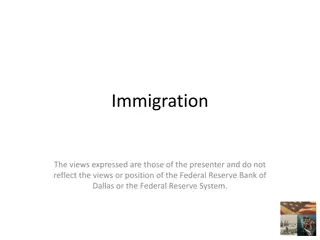Understanding Illegal Aliens and Immigration Policy in the United States
The concept of illegal aliens in the United States dates back to the 1798 Alien and Sedition Acts. While U.S. law differentiates between aliens and immigrants, there is no explicit definition of "illegal alien." The Immigration Acts of the 1920s led to the emergence of illegal immigration as a significant issue. The racial dimensions of immigration policy have resulted in the racialization of certain immigrant groups, such as Mexicans. Deportation has been a central aspect of U.S. immigration policies over the years.
Download Presentation

Please find below an Image/Link to download the presentation.
The content on the website is provided AS IS for your information and personal use only. It may not be sold, licensed, or shared on other websites without obtaining consent from the author. Download presentation by click this link. If you encounter any issues during the download, it is possible that the publisher has removed the file from their server.
E N D
Presentation Transcript
Illegal Aliens March 15, 2016
Definition of Alien An alien is "any person not a citizen or national of the United States. U.S. Government's use of alien dates back to 1798, when it was used in the Alien and Sedition Acts. U.S. law makes a clear distinction between aliens and immigrants by defining immigrants as a subset of aliens. Although U.S. law provides no overarching explicit definition of the term "illegal alien," the term is used in many statutes and elsewhere. U.S. law also uses the term "unauthorized alien. U.S. immigration laws do not refer to illegal immigrants, but in common parlance the term "illegal immigrant" is often used to refer to any illegal alien.
it [Congress] had nearly assured such an outcome when it passed the Immigration Acts of 1921 and 1924, which for the first time imposed numerical restrictions on immigration. Because illegal entry is a concomitant of restrictive immigration policy, the quota laws stimulated the production of illegal aliens and introduced that problem into the internal spaces of the nation. Although unlawful entry had always resulted from exclusion, in the 1920s illegal immigration achieved mass proportions and deportation assumed a central place in immigration policy. The nature and demands of restriction raised a range of problems for the nation state which were at once administrative (how should restriction be enforced?), juridical (how is sovereignty defined?), and constitutional (do illegal aliens have rights?) (70-71).
Illegal Aliens Inclusion in the nation was both a social reality and a legal impossibility Territoriality defining and policing nation-state control of land borders Administrative enforcement--visas Political discourse about deserving and undeserving, and just and unjust deportations
Racial dimensions The processes of territorial redefinition and administrative enforcement informed divergent paths of immigrant racialization. Europeans and Canadians tended to be disassociated from the real and imagined category of illegal alien, which facilitated their nation and racial assimilation as white American citizens. In contrast, Mexicans emerged as iconic illegal aliens. Illegal status became constitutive of a racialized Mexican identity and of Mexicans exclusion from the national community and policy (72).
